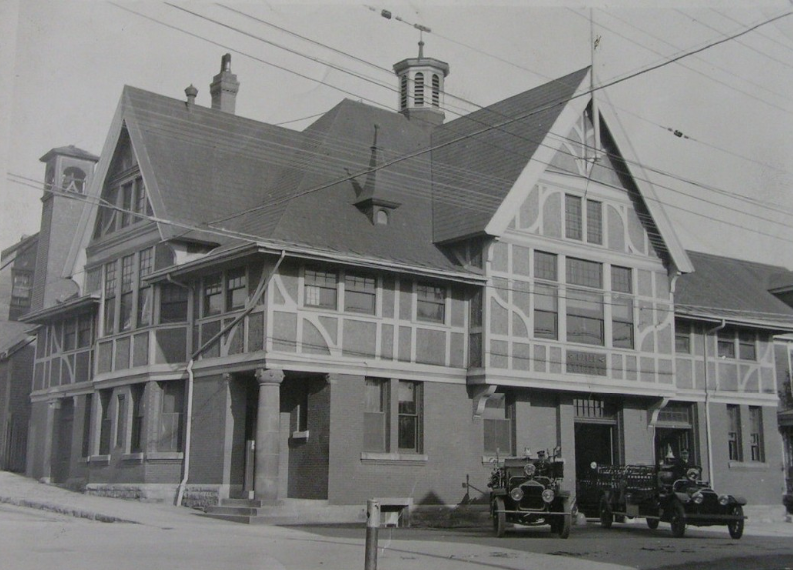By Jessica Carver for the West Hants Historical Society
Generally described as a grand old building, the Opera House was located on the corner of Gerrish Street and Grey Street.
After the Great Fire of 1897 devastated the town of Windsor, efforts began to rebuild the town and its infrastructure. Many saw the fire as an opportunity to significantly improve the buildings of the town. This is how the Opera House came to be.
Built in 1899, the tender for constructing the Opera House was granted to E.F. Munro and it was undeniably the hub of the town after its completion for many years. Formally known as the Civic Building, the Opera House contained the town offices, the fire station, and an auditorium. Generally described as a grand old building, the Opera House was located on the corner of Gerrish Street and Grey Street, where Tommy Gun’s pool room sits today. The building was constructed in an impressive Tudor style, with a sandstone pillar on the corner. The Town Manager’s office was in the corner, with the town council chamber and police chief office beside it. The side on Gerrish street was home to the fire station. The auditorium was featured on the upper floor of the Opera House.
The Opera House had seen many different events over its 60 year history in Windsor. First, it was home to variety shows and plays featuring the local talent. Christmas concerts and high school shows were a common event hosted in the auditorium, as were local theatre productions. Travelling shows also called the Opera House home while they were in town. Groups such as travelling circuses, poets, singers, opera, orchestras, and dramatic groups were all regular performances. Perhaps one of the most famous of these visitors to the Opera House was the renowned Australian contralto Miss Eva Mylott. She was famed the world over for her rich singing voice, she stopped in Windsor for a performance in 1913.
When the Opera Cinema began showing silent films the price of admission for a child was 12 cents and for an adult was 17 cents.
In the 1920’s silent movies became a commonplace at the Opera House. After all, the auditorium on the second floor of the civic building was the most logical place to begin showcasing this new technology. The silent films of the time were accompanied by the musical prowess of Miss Belle Durphee, a pianist from Saint John, New Brunswick, who moved to Windsor to play piano along with the films being shown. The Windsor Citizens Band also provided some musical accompaniment in an aim to create the appropriate atmosphere for each scene. When the Opera Cinema began showing silent films the price of admission for a child was 12 cents and for an adult was 17 cents.
In the 1930’s the Windsor Glee Club was being conducted by W. Allister Crandall and was a regular feature of the Opera House. They performed a series of Gilbert and Sullivan operettas such as the Mikado, the H.M.S. Pinafore, and The Pirates of Penzance, which were hugely popular throughout the town and the Annapolis Valley.
The demolition of the Opera House made way for one of the first supermarkets in Windsor and brought with it a new era of shopping and commercialism.
The Opera House began to fall out of fashion in the 1940’s and 50’s when the newer Imperial Theatre arrived in Windsor. The building was then renovated and became a space for the Department of Health and for the home economics class of the Windsor Academy. At this time the Opera House became much too expensive to heat. In the winter, 30 tons of coal was used each week to keep the atmosphere comfortable inside the building.
In 1961, 62 years after it was first built, the Opera House was demolished. It was replaced by a newer and more efficient civic building on King Street. The demolition of the Opera House made way for one of the first supermarkets in Windsor and brought with it a new era of shopping and commercialism. The Old Windsor Opera House is still known as one of the most beautiful buildings in Windsor during the 20th century and its legacy can still be felt today.

